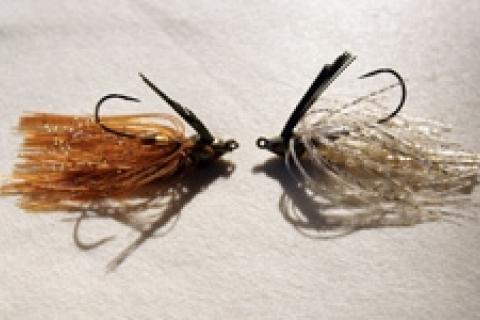
 Skirted jigs are a mainstay of summer bass fisherman, especially when largemouths are the target. Since such jigs are designed to be used in and around cover, stranded weedguards tend to a standard feature.
Skirted jigs are a mainstay of summer bass fisherman, especially when largemouths are the target. Since such jigs are designed to be used in and around cover, stranded weedguards tend to a standard feature.
Trimming back the fiber weedguards on skirted jigs is advice often conveyed by savvy anglers as a means of increasing hook-up ratios. But just how much should you cut 'em and in what situations?
Minnesota-based tournament angler Scott DeZurik uses both swimming jigs and traditional flipping jigs when targeting Gopher state largemouths.
Since cover isn't as much of a factor when fishing a swimming jig, DeZurik is more liberal with the trim job when missed strikes say it's time for a cut.
Using 4-inch bladed meat-cutting scissors, he makes one continuous cut, starting from the free end of the weedguard and finishing at the head. A couple of the inside strands are left intact so there is still total hook coverage.
"This way there are more bristles left at the head of the jig. The guard is more flexible at the free end, but still firm enough to keep the weeds off," he explained.
For flippin' jig applications, where contact with wood and heavy weeds demands more hook protection, DeZurik will still trim guards, but not as aggressively. He starts his cut more to the outside of the bristle wrap, which allows for more fibers to remain their original length. Angling the scissors away from the jig head reduces the total length of the cut as well.
- 2972 views

